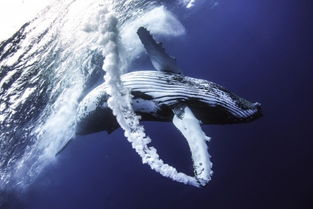Content:
In the vast and mysterious depths of the ocean, where the sun's rays barely penetrate, lies a world of untold wonders and fishing opportunities. Underwater fishing, often referred to as spearfishing or free diving fishing, requires a unique set of skills and techniques to successfully hook and reel in the sea's treasures. This article delves into the art of underwater fishing, focusing on how to hang a fish hook and master the essential techniques for a successful catch.
Understanding the Underwater Environment
Before diving into the specifics of hooking fish underwater, it's crucial to understand the underwater environment. The ocean is a complex ecosystem with varying depths, currents, and species of fish. Knowledge of these factors can greatly enhance your chances of a successful catch.
Water Pressure: As you descend deeper into the water, the pressure increases, which can affect your buoyancy and ability to move. It's essential to acclimate to the pressure and ensure your gear is suitable for the depth you plan to fish.
Visibility: Underwater visibility can vary widely, from crystal clear to murky. This will impact your ability to spot fish and requires adjustments in your approach.
Currents: Currents can be a fisherman's best friend or worst enemy. They can carry you to fish or away from them. Understanding and using currents to your advantage is a key skill in underwater fishing.
Choosing the Right Gear
The gear you use for underwater fishing will depend on the species you're targeting and the conditions you're facing. Here are some essential items:
Fishing Line: A strong, flexible fishing line is a must. The line should be resistant to saltwater and capable of withstanding the weight of the fish you're aiming to catch.
Hooks: The size and type of hook you use will depend on the fish you're targeting. Jig hooks, circle hooks, and treble hooks are commonly used in underwater fishing.
Swivels: These help prevent tangles in your line, especially when dealing with currents and fish that may jump or swim erratically.
Leader Line: A shorter, lighter line than your main fishing line connects to the hook. This allows for a more delicate presentation and can prevent the fish from seeing the heavier main line.
Weights: Weights help keep your bait or lure at the desired depth and can also help in casting if you're using a rod and reel.

How to Hang a Fish Hook Underwater
Hanging a fish hook underwater is different from traditional above-water fishing. Here's a step-by-step guide:
Select the Right Bait: Choose bait that is native to the area you're fishing and is known to attract the species you're targeting.
Attach the Bait: Attach the bait to the hook using a strong knot, such as the Palomar or the Improved Clinch knot. Ensure the bait is securely attached but not too tight, as this can make it difficult for the fish to swallow.
Adjust Buoyancy: If you're using a weight, attach it to the main line above the hook. This will help keep your bait at the desired depth.
Cast or Dive: If you're using a rod and reel, cast your line out as you would above water. If you're free diving, you'll need to swim down to the desired depth and release the line to the appropriate depth.
Wait Patently: Once your bait is in place, wait for a fish to take the bait. Underwater visibility can be limited, so it's important to be patient and watch for any signs of interest from fish.
Reeling in Your Catch
When a fish takes the bait, it's time to reel in your catch:
Signal Your Dive Buddy: If you have a dive buddy, signal them to follow as you prepare to bring the fish to the surface.
Control the Fish: Use gentle pressure on the line to guide the fish to the surface. Avoid pulling too hard, as this can cause the fish to break free or injure itself.
Surface the Fish: Once the fish is close to the surface, signal to your buddy to help you net the fish. Use a fish net designed for underwater fishing to safely secure the catch.
Safety and Conservation
Always prioritize safety when underwater fishing. Make sure you're trained in free diving or have the necessary equipment for scuba diving. Additionally, practice conservation by following local fishing regulations and releasing non-targeted species.
In conclusion, underwater fishing is an exhilarating and rewarding activity that requires patience, skill, and respect for the ocean's ecosystem. By mastering the art of hanging a fish hook and employing the right techniques, you'll be well on your way to becoming a seasoned underwater angler. Remember to enjoy the experience and cherish the beauty of the underwater world as you hook and reel in the sea's delights.












